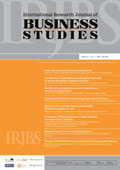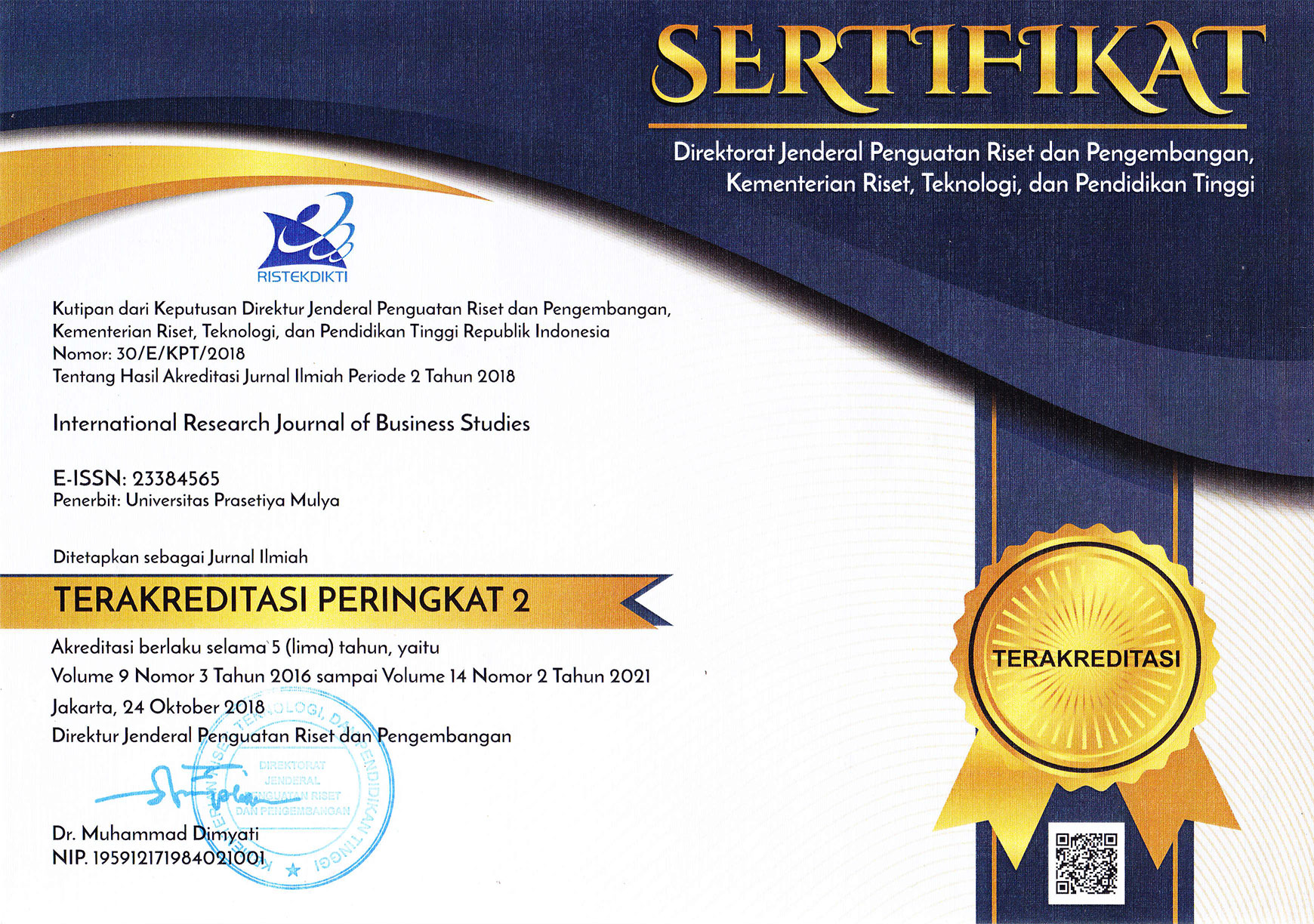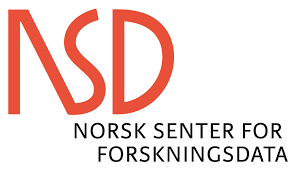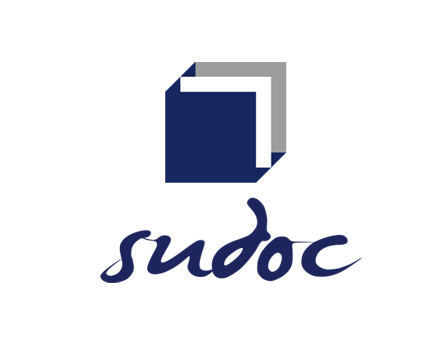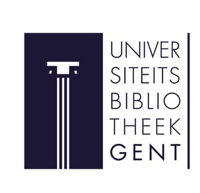Article Metrics |
|
|
Organisational Change in Public Service
Abstract
This study aims to investigate institutional logics underlying the initiation of change management process in public sector organisations. Organisational Institutionalism is used to frame the analysis. The study took place in three different public organisations in the Province of East Java, including one-stop-service for licencing as well as that of vehicle registration, taxing and insurance and also from local health authority. Qualitative method was employed to analyse information gathered through semi-structured interviews with 35 respondents. The study unveiled various institutional logics underlying the adoption of changes and innovation in the organisations. It ranged from the most common reason of improving performance gaps up to the needs to clean the organisation’s name and build a better image. The study contributes to the idea that organisation’s previous experiences as well as perceived institutional character affect the needs to conduct changes.
Full Text:
References
Aaltio, I., & Heilman, P. (2010). Case Study as a Methodological Approach. In A. J. Mills, G. Durepos, & E. Wiebe (Eds.), Encyclopedia of Case Study Research (Vol. 1, pp. 66 - 76). London, United Kingdom: SAGE Publications, Inc.
Agranoff, R. (2007). Managing within networks: Adding value to public organizations. Washington, D.C.: Georgetown University Press.
Albury, D. (2005). Fostering innovation in public services. Public Money & Management, 25(1), 51-56.
Alm, J., Aten, R. H., & Bahl, R. (2001). Can Indonesia Decentralize Successfully? Plans, Problems, and Prospects: United States Agency for International Development (USAID).
Bartlett, D., & Dibben, P. (2002). Public sector innovation and entrepreneurship: Case studies from local government. Local Government Studies, 28(4), 107-121.
Batley, R. (1999a). The new public management in developing countries: implications for policy and organizational reform. Journal of International Development, 11(5), 761-765.
Batley, R. (1999b). The new public management in developing countries: Introduction. Journal of International Development, 11(5), 755-760.
Becheikh, N., Halilem, N., Jbilou, J., Mosconi, E., Hammami, H., & Landry, R. (2007).
Conceptualization and Determinants of Innovation in the Public Sector: A Systematic Revue. Paper presented at the XVII International RESER Conference, 13-15 September 2007, Tampere, Finland. http://www.reser.net/file/27690/
Beerepoot, M., & Beerepoot, N. (2007). Government regulation as an impetus for innovation: Evidence from energy performance regulation in the Dutch residential building sector. Energy Policy, 35(10), 4812-4825. doi: 10.1016/j.enpol.2007.04.015
Beeson, M. (2001). Globalization, Governance, and the Political-Economy of Public Policy Reform in East Asia. Governance, 14(4), 481-502.
Bekkers, V., Edelenbos, J., & Steijn, B. (2011). Linking Innovation to the Public Sector: Contexts, Concepts and Challenges. In V. Bekkers, J. Edelenbos, &
B. Steijn (Eds.), Innovation in the Public Sector: Linking Capacity and Leadership. Basingstoke, Hampshire: Palgrave MacMillan.
Benson, J. K. (1975). The Interorganizational Network as a Political Economy.
Administrative Science Quarterly, 20(2), 229-249. doi: 10.2307/2391696
Bhakti, I. N. (2004). The Transition to Democracy in Indonesia: Some Outstanding Problems. In J. Rolfe (Ed.), The Asia-Pacific: A Region in Transition (pp. 195-207). Honolulu, HI: The Asia-Pacific for Security Studies.
Bleijenbergh, I. (2010). Case Selection. In A. J. Mills, G. Durepos, & E. Wiebe (Eds.), Encyclopedia of Case Study Research (Vol. 1, pp. 61-63). London, United Kingdom: SAGE Publications, Inc.
Borins, S. (2001). Public Management Innovation in Economically Advanced and Developing Countries. International Review of Administrative Sciences, 67(4), 715-731.
Bouckaert, G. (2008). Changing Strategies in Public Sector Reform: New Zealand in an international context. Institution of Public Administration Australia Retrieved from http://www.ipaa.org.au/_dbase_upl/Geert Bouckaert.pdf.
Box, R. C. (1999). Running government like a business: implications for public administration theory and research. The American Review of Public Administration, 29(1), 19-43.
Brodjonegoro, B., & Asanuma, S. (2000). Regional Autonomy and Fiscal Decentralization in Democratic Indonesia. Hitotsubashi Journal of Economics, 41, 111-122.
Dacin, M. T., Goodstein, J., & Scott, W. R. (2002). Institutional Theory and Institutional Change: Introduction to the Special Research Forum. The academy of management journal, 45(1), 43-56.
DiMaggio, P. J., & Powell, W. W. (1983). The iron cage revisited: Institutional isomorphism and collective rationality in organizational fields. American sociological review, 147-160.
DiMaggio, P. J., & Powell, W. W. (1994). The new institutionalism in organizational analysis. Chicago: University of Chicago Press.
Drucker, P. F. (1985). Innovation and Entrepreneurship. London: William Heinemann Ltd.
Dunleavy, P., & Margetts, H. (2000). The Advent of Digital Government: Public Bureaucracies and the State in the Internet Age. Paper presented at the Annual Conference of the American Political Science Association, Washington, D.C., 4 September 2000. http://www.governmentontheweb.org/downloads/papers/APSA_2000.p df
Ferlie, E. B., Pettigrew, A., Ashburner, L., & Fitzgerald, L. (1996). The New Public Management in Action. Oxford: Oxford University Press.
Flynn, N. (2002). Explaining the New Public Management. New Public Management: Current trends and future prospects, 57.
Flynn, N. (2007). Public Sector Management (5th ed.). London: SAGE Publications Ltd.
Frederickson, H. G. (1996). Comparing the reinventing government movement with the new public administration. Public administration review, 56(3), 263-270.
Friedland, R., & Alford, R. (1991). Bringing Society Back in: Symbols, Practices and Institutional Contradictions. In P. J. DiMaggio & W. W. Powell (Eds.), The New Institutionalism in Organization Analysis (pp. 232-266). CHicago: University of Chicago Press.
Gould-Williams, J. (2004). The Effects of 'High Commitment' HRM Practices on Employee Attitudes: The Views of Public Sector Workers. Public Administration, 82(1), 63-81.
Greer, P. (1994). Transforming Central Government: The Next Steps Initiative.
Buckingham, England: Open University Press.
Hardy, C., & Phillips, N. (1998). Strategies of Engagement: Lessons from the Critical Examination of Collaboration and Conflict in an Interorganizational Domain. Organization Science, 9(2), 217-230.
Hartley, J. (2006). Innovation and its Contribution to Improvement: A Review for Policymakers, Policy Advisers, Managers and Researchers. London: Department for Communities and Local Government Retrieved from http://tna.europarchive.org/20061101222554/http://www.communitie s.gov.uk/pub/177/InnovationanditsContributiontoImprovementAReview FullReport_id1500177.pdf.
Hayes, N., & Rajão, R. (2011). Competing institutional logics and sustainable development: the case of geographic information systems in Brazil's Amazon region. Information Technology for Development, 17(1), 4-23.
Hofman, B., & Kaiser, K. (2002). The Making of the Big Bang and its Aftermath: A Political Economy Perspective. Paper presented at the Conference on 'Can Decentralization Help Rebuild Indonesia?, Atlanta, Georgia, May 1-3, 2002, Jakarta, Indonesia. http://siteresources.worldbank.org/INTINDONESIA/Resources/Decentr alization/hofmankaiserAtlanta_3.pdf
Huberman, A. M., & Miles, M. B. (1994). Data Management and Analysis Methods.
In N. K. Denzin & Y. S. Lincoln (Eds.), Handbook of Qualitative Research
(pp. 428-444). Thousand Oaks, CA, USA: Sage Publications, Inc.
Kling, R., & Iacono, S. (1989). The institutional character of computerized information systems. Information Technology & People, 5(1), 7-28.
Kraemer, K. L., & Dedrick, J. (1997). Computing and public organizations. Journal of Public Administration Research and Theory, 7(1), 89.
Kraemer, K. L., & King, J. L. (1986). Computing and public organizations. Public Administration Review, 488-496.
Kraemer, K. L., & King, J. L. (2006). Information technology and administrative reform: will e-government be different? International Journal of Electronic Government Research, 2(1), 1-20.
Kraemer, K. L., & Perry, J. L. (1989). Innovation and computing in the public sector: A review of research. Knowledge, Technology & Policy, 2(1), 72-87.
Larbi, G. A. (1999). The new public management approach and crisis states: UNRISD - United Nations Research Institute for Social Development.
LintasTerkiniNews. (2013, April 9). Komnas Waspan: Masih Ada SAMSAT di Daerah Lakukan Pungli. LintasTerkiniNews.Com. Retrieved from http://lintasterkininews.com/komnas-waspan-masih-ada-samsat-di- daerah-lakukan-pungli.php
March, J. G., & Olsen, J. P. (1996). Institutional perspectives on political institutions. Governance, 9(3), 247-264.
Martin, K. D., Johnson, J. L., & Cullen, J. B. (2009). Organizational Change, Normative Control Deinstitutionalization, and Corruption. Business Ethics Quarterly, 19(1), 105-130.
Masduki, M. (2007). Regulasi Penyiaran: Dari Otoriter ke Liberal (A. Rahim Ed.).
Yogyakarta, Indonesia: LKiS.
McCargo, D. (2003). Media and Politics in Pacific Asia. London: Routledge Curzon. Mera, K. (2004). The Big Bang Decentralization in Indonesia and the Lessons
Learned. Paper presented at the The International Workshop on Urban
Governance in Glocal Perspective, University of Southern California, California, September 17-18, 2004.
Niehaves, B. (2007). Innovation Processes in the Public Sector–New Vistas for an Interdisciplinary Perspective on E-Government Research? In M. A. Wimmer, H. J. Scholl, & A. Gronlund (Eds.), Electronic Government (pp. 23- 34). Berlin: Springer Lecture Notes in Computer Science (LNCS) 4656 Extended Version.
Nieto Morales, F., Wittek, R., & Heyse, L. (2013). After the Reform: Change in Dutch Public and Private Organizations. Journal of Public Administration Research & Theory, 23(3), 735-754. doi: 10.1093/jopart/mus006
Ocasio, W. (1997). Towards an Attention-based view of the firm. Psychology, 1, 403-404.
Osborne, S. P., & Brown, K. (2005). Managing Change and Innovation in Public Organizations. Oxon, UK: Routledge.
Peled, A. (2001). Network, coalition and institution-The politics of technological innovation in the public sector. Information Technology & People, 14(2), 184-205.
Pollitt, C. (2003). The essential public manager. Maidenhead: Open University.
Porter, M. E. (1998). The competitive advantage of nations: with a new introduction. New York: Free press.
Rodríguez, C., Langley, A., Béland, F., & Denis, J.-L. (2007). Governance, Power, and Mandated Collaboration in an Interorganizational Network.
Administration & Society, 39(2), 150-193. doi: 10.1177/0095399706297212
Rogers, E. M. (2003). The Diffusion of innovations (5th ed.). London: Free press. Schumpeter, J. A. (1934). The Theory of Economic Development. Cambridge, MA:
Harvard University Press.
Schumpeter, J. A. (1942). Capitalism, socialism, and democracy. Harper: New York.
Scott, W. R. (2008). Institutions and Organizations: Ideas and Interest. Thousand Oaks, CA: SAGE.
Subagio, U. (2005). Local Government Innovations in Indonesia: Experiences after the Decentralization Big Bang in 2001. Paper presented at the Network of Asia-Pacific Schools and Institutes of Public Administration and Governance (NAPSIPAG) Annual Conference 2005, Beijing, PRC,. http://www.napsipag.org/pdf/Decentralization.pdf
TheAsiaFoundation. (2002). Indonesia Rapid Decentralization Appraisal (IRDA): Second Report. Jakarta, Indonesia: The Asia Foundation Retrieved from http://asiafoundation.org/resources/pdfs/1IRDA5english.pdf.
TheAsiaFoundation. (2004). Indonesia Rapid Decentralization Appraisal (IRDA): Fifth Report. Jakarta, Indonesia: The Asia Foundation Retrieved from http://asiafoundation.org/publications/pdf/397.
Thompson, F. J., & Riccucci, N. M. (1998). Reinventing government. Annual Review of Political Science, 1(1), 231-257.
Thompson, J. R., & Ingraham, P. W. (1996). The reinvention game. Public Administration Review, 56(3), 291-298.
Thornton, P. H. (2004). Markets from Culture: Institutional Logics and Organizational Decisions in Higher Education Publishing. CA: Stanford University Press.
Thornton, P. H., Jones, C., & Kury, K. (2005). Institutional Logics and Institutional Change in Organizations: Transformation in Accounting, Architecture, and Publishing. Research in the Sociology of Organizations, 23, 125-170.
Thornton, P. H., & Ocasio, W. (1999). Institutional logics and the historical contingency of power in organizations: Executive succession in the higher education publishing industry, 1958-1990 1. American Journal of Sociology, 105(3), 801-843.
Thornton, P. H., & Ocasio, W. (2008). Institutional Logics. In R. Greenwood, C. Oliver, R. Suddaby, & K. Sahlin-Andersson (Eds.), The Sage handbook of organizational institutionalism (pp. 99-129). London: SAGE.
Thornton, P. H., Ocasio, W., & Lounsbury, M. (2012). The institutional logics perspective: A new approach to culture, structure, and process. Oxford University Press on Demand. Oxford: Oxford University Press on Demand.
Tilcsik, A. (2010). From Ritual to Reality: Demography, Ideologi, and Decoupling in a Post-Communist Government Agency. Academy of Management Journal, 53(6), 1474-1496.
Tracy, S. J. (2013). Qualitative Research Methods: Collecting Evidence, Crafting Analysis, Communicating Impact. Oxford, UK: Wiley-Blackwell.
Usman, S. (2002). Regional Autonomy in Indonesia: Field Experiences and Emerging Challenges. Paper presented at the The 7th PRSCO Summer Institute / The 4th IRSA International Conference: "Decentralization, Natural Resources, and Regional Development in the Pacific Rim", Bali, June 20 - 21, 2002.
http://www.unpan1.un.org/intradoc/groups/public/documents/.../unpa n018238.pdf
Vigoda-Gadot, E., Shoham, A., Schwabsky, N., & Ruvio, A. (2005). Public Sector Innovation for the Managerial and the Post-Managerial Era: Promises and Realities in a Globalizing Public Administration. International public management journal, 8(1), 57-81.
Walker, R. M. (2006). Innovation Type and Diffusion: An Empirical Analysis of Local Government. Public Administration, 84(2), 311-335.
Walker, R. M., Jeanes, E., & Rowlands, R. (2002). Measuring Innovation–Applying the Literature Based Innovation Output Indicator to Public Services.
Public Administration, 80(1), 201-214.
Worrall, L., Cooper, C. L., & Campbell-Jamison, F. (2000). The impact of organizational change on the work experiences and perceptions of public sector managers. Personnel Review, 29(5), 613-636.
Copyright (c) 2022 INTERNATIONAL RESEARCH JOURNAL OF BUSINESS STUDIES
International Research Journal of Business Studies has been covered by the following services: | ||||||||||||||||||||||||
|

